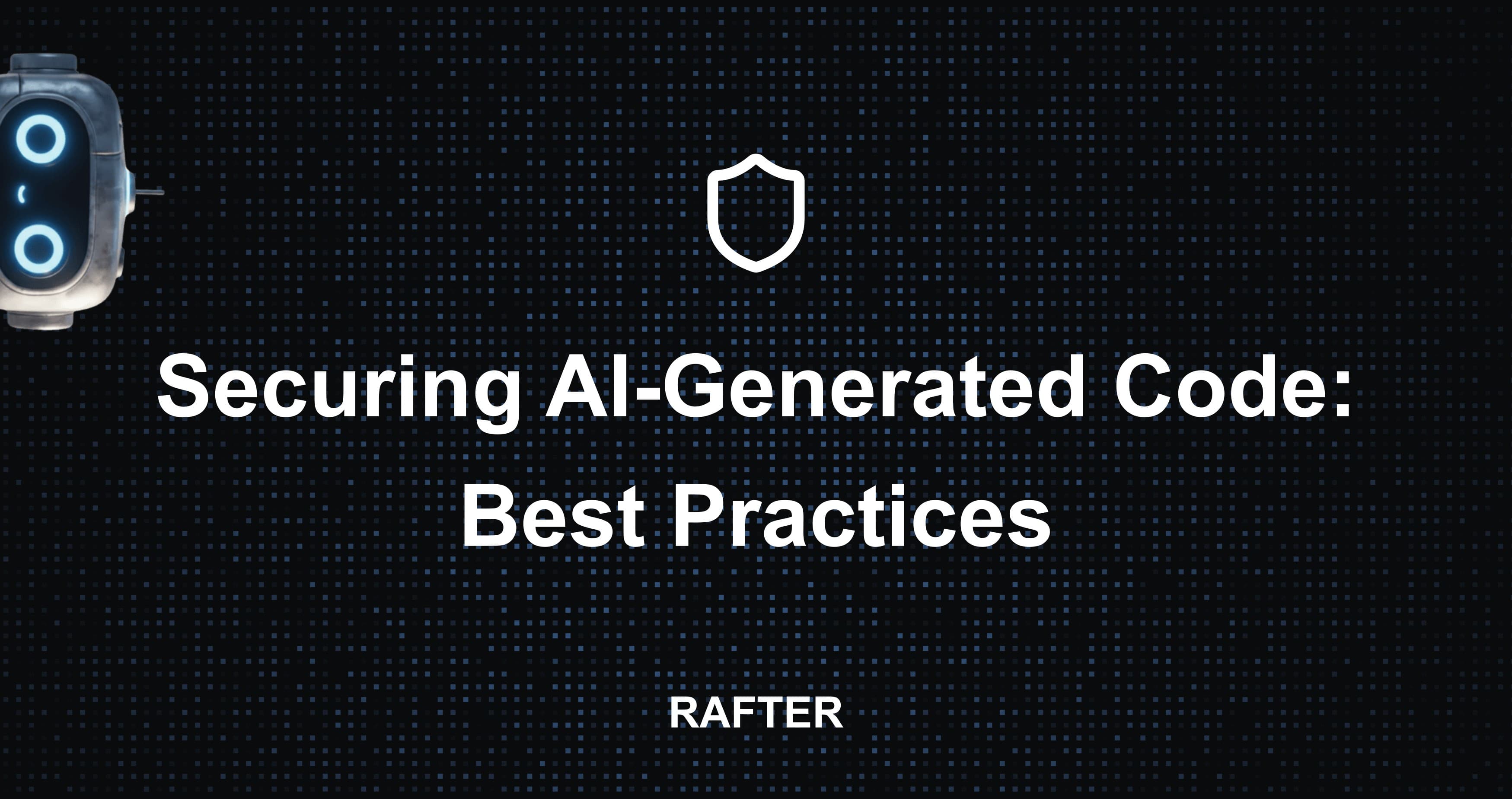
9/20/2025 • 2 min read
Securing AI-Generated Code
As AI code generation tools become increasingly popular, developers need to understand the unique security challenges they present and how to mitigate them effectively.
The AI Code Security Challenge
AI-generated code, while impressive, can introduce security vulnerabilities in several ways:
- Training Data Bias: AI models trained on public repositories may inherit common vulnerabilities
- Lack of Context: AI doesn't understand your specific security requirements
- Overconfidence: Generated code may appear correct but have subtle security flaws
Never deploy AI-generated code without a thorough security review. The convenience of AI doesn't replace the need for security diligence. The simplest way is Rafter. It only takes a few minutes. Run a scan right now →
Best Practices for AI Code Security
1. Always Review Generated Code
Never trust AI-generated code blindly. Treat it like any other third-party code:
// AI might generate this:
const userInput = req.body.data;
const query = `SELECT * FROM users WHERE id = ${userInput}`;
// But this is vulnerable to SQL injection!
// Always validate and sanitize inputs
2. Use Security-First Prompts
When prompting AI tools, be explicit about security requirements:
"Generate a secure user authentication function that:
- Validates all inputs
- Uses parameterized queries
- Implements proper error handling
- Follows OWASP guidelines"
For the ultimate security prompt that covers all major vulnerability categories, check out our Vibe Coding Security guide where we build out THE comprehensive prompt for secure AI code generation.
3. Implement Automated Security Scanning
Use tools like Rafter to automatically scan AI-generated code:
- Static Analysis: Catch common vulnerabilities before deployment
- Dependency Scanning: Ensure third-party libraries are secure
- Configuration Review: Verify security settings are properly configured
4. Test Security Scenarios
AI-generated code often lacks proper error handling and edge case coverage:
// Test these scenarios:
- Invalid inputs
- Malformed data
- Boundary conditions
- Authentication bypass attempts
- Authorization failures
The Rafter Advantage
Rafter's AI-powered analysis is specifically designed to understand the context and intent of code, making it particularly effective at finding vulnerabilities in AI-generated code that traditional scanners might miss.
Key Benefits:
- Context Awareness: Understands the intended purpose of code
- Pattern Recognition: Identifies AI-generated code patterns and their risks
- Rapid Scanning: Get results in seconds, not hours
- Actionable Results: Clear explanations and remediation steps
Conclusion
AI code generation is here to stay, but it requires a security-first mindset. By following these best practices and leveraging tools like Rafter, you can harness the power of AI while maintaining the security standards your applications demand.
Remember: AI is a powerful tool, but security is a human responsibility.
Want to see how Rafter can help secure your AI-generated code? Start a free scan today.